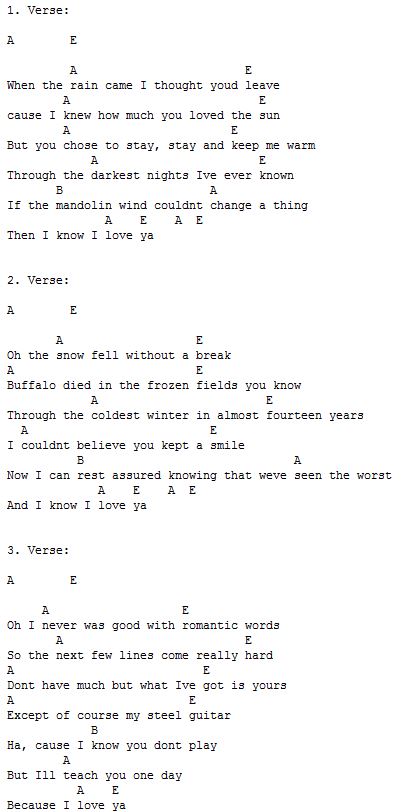 Browns Archive
Browns Archive  Cleveland Sports / Classic Rock Vault: Rod Stewart’s Ode to Browns C Mike Baab
Cleveland Sports / Classic Rock Vault: Rod Stewart’s Ode to Browns C Mike Baab
 Today’s Vault entry is interactive. We are all going to play some guitar.
Today’s Vault entry is interactive. We are all going to play some guitar.
If you already play, reach over and grab your six-string. It doesn’t need to be anything special- mine is just an old Yamaha, which suits me fine. Anything nice enough not to take camping, or let children handle, wouldn’t fit my lifestyle.
If you don’t have a guitar, please still give this a try. It will be fun. Just download this guitar chords app. You’ll want to have your guitar or smart phone ready for playing, and another device ready to queue up a YouTube video.
Here is our YouTube source. This is the audio for what appears to be the entire 1993 Rod Stewart performance for MTV, titled “Unplugged… and Seated.” It’s a  nice anthology, from the acoustic series produced by the music network. Stewart is featured with fellow Faces member Ronnie Wood and a session band. (Stewart and Wood had joined Small Faces in 1969, as the band changed its name to Faces. They were contemporaries of British bands The Who, the Rolling Stones, and The Kinks, albeit with more modest success. Stewart’s solo career ran concurrent to the Faces’ run, although his stardom began to overshadow the band’s. The guitarist Wood began to tour with the Stones in 1975. As Stewart tells it, Mick Jagger promised him they would not ‘steal’ Wood, but of course they did. Faces had an influential role in rock history, and they briefly reunite from time to time.)
nice anthology, from the acoustic series produced by the music network. Stewart is featured with fellow Faces member Ronnie Wood and a session band. (Stewart and Wood had joined Small Faces in 1969, as the band changed its name to Faces. They were contemporaries of British bands The Who, the Rolling Stones, and The Kinks, albeit with more modest success. Stewart’s solo career ran concurrent to the Faces’ run, although his stardom began to overshadow the band’s. The guitarist Wood began to tour with the Stones in 1975. As Stewart tells it, Mick Jagger promised him they would not ‘steal’ Wood, but of course they did. Faces had an influential role in rock history, and they briefly reunite from time to time.)
There’s a lot of good stuff on this “Unplugged” album (especially Faces’ and Rod Stewart’s early stuff). The older, folksier songs are what I gravitate to. “Maggie May” and “Reason to Believe“ are great examples. So is “Every Picture Tells a Story” (the original 1971 album of the same name is a must-have in any classic rock collection. It’s basically a Faces album, although it isn’t credited as such. Apparently, this is due to contractual restraints on the band). There is an acoustic version of my favorite rock 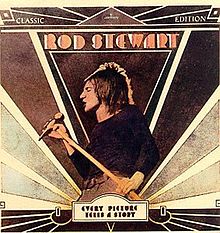 ‘n roll number of all time on there, “Stay With Me.” By the way, the original recording of that one belongs in the top five of any classic rock radio countdown, along with… I don’t know… “Babe”, by Styx; “Open Arms”, by Journey; “Billy, Don’t Be a Hero”, by Bo Donaldson and the Heywoods, and “Achy Breaky Heart”, by Billy Ray Cyrus.
‘n roll number of all time on there, “Stay With Me.” By the way, the original recording of that one belongs in the top five of any classic rock radio countdown, along with… I don’t know… “Babe”, by Styx; “Open Arms”, by Journey; “Billy, Don’t Be a Hero”, by Bo Donaldson and the Heywoods, and “Achy Breaky Heart”, by Billy Ray Cyrus.
Ha. Just seeing if you were still with me. I’d say a top five of “Stay With Me”, “Walk This Way”, “Smoke on the Water”, “Smells Like Teen Spirit”, and “Satisfaction” works for me. Ask me tomorrow and it will likely be different. But the original recording of “Stay With Me” ROCKS; it has multiple tempo changes; it has attitude. (Sorry, but I can’t even listen to “Stairway” or the other Zeppelin hits on their fourth album any more, due to overexposure. Same goes for “Freebird” and the top anthems of The Who.)
In the “Unplugged… and Seated” YouTube video, queue it up at 50:35, for “Mandolin Wind” (another “Every Picture…” song). Turn up your volume and give it a listen. To me, this number measures up to almost any other Stewart song, including “Maggie May.” Although “Mandolin Wind” is an all-time Stewart classic, it began as the B side of his Temptations cover, “(I Know) I’m Losing You” (yep, same album). Its folksy string arrangement and simple declaration of the appreciation of love combine in an enduring classic, forty years later.
Regardless of whether you are using a guitar, or the guitar app: as you look at the strings (see also photo at the top of this article), the bottom three are the D, 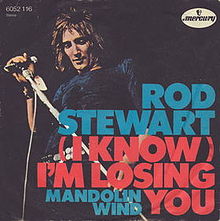 A, and E strings. Play, or choose the B chord on the app: strum bottom three strings a few times. Once you are comfortable, pick those strings individually, downward, in order. Then strum again. Easy!
A, and E strings. Play, or choose the B chord on the app: strum bottom three strings a few times. Once you are comfortable, pick those strings individually, downward, in order. Then strum again. Easy!
Now, go to the A chord. Do the same- pick those bottom three strings, then strum.
Go back to the B chord; pick and strum again. Listen to the beginning of “Mandolin Wind” again, just before the vocals start. OK, let’s play the intro ourselves. Pick the bottom strings, then strum. Switch to A. Pick, then strum. Keep on A. Pick, then strum. Back to B; pick, then strum.
Keep it going. B A A B. B A A B. On the app, you need to quickly hit the button for the chord changes, but the tempo is slow enough to get the hang of it. B A A B. B A A B.
B A A B? Is it merely coincidence that the intro to Rod Stewart’s “Mandolin Wind” just happens to spell out the last name of one of the better centers in Cleveland Browns history? You be the judge.
(If you add an E chord (strum all strings on that one), you can play rhythm guitar to “Mandolin Wind” in its entirety. Here are the lyrics and the chords. Enjoy!)
***
By 1982, the Kardiac Kids weren’t actually kids, any more. That era of the Cleveland Browns was unofficially winding down. By 1985’s ramping up of the Bernie Kosar period, there was only a handful of core players who had also held prominent roles during Brian Sipe’s heyday.
Namely, in the mid-to-late ‘80s, TE Ozzie Newsome was entering his prime. As was fellow 1978 first-round draft pick, OLB Clay Matthews. So were 1979 seventh-round OL Cody Risien, 1981 first-round CB Hanford Dixon, and 1982 first-round OLB Chip Banks. K Matt Bahr was still around, as well.
Otherwise, the roster was turning over. A look at the skill players on offense shows the dramatic difference between ’82 and ’85 (and later): Sipe, RBs Charles White and Mike Pruitt, and WRs Ricky Feacher and Dave Logan would give way to Kosar, RBs Earnest Byner and Kevin Mack, and WRs Clarence Weathers and Brian Brennan.
And how about the offensive line: Doug Dieken / Robert Jackson / Tom DeLeone / Joe DeLamielleure / Risien screams “Brian Sipe’s line.” Paul Farren / George Lilja / Mike Baab / Dan Fike / Risien ? Kosar, certainly.
The differences in style between the gambling head coach Sam Rutigliano and defensive-minded Marty Schottenheimer were distinct, as well.
The Browns teams of the mid-to-late ‘80s were packed with talent. There were some nice draft picks, like S Don Rogers in 1984, WR Reggie Langhorne in 1985, and WR Webster Slaughter in 1986. The USFL, an upstart football league that attempted to compete with the NFL in the early ‘80s, folded by around 1985; the Browns were one of the NFL teams to seriously pursue USFL players who were suddenly without a team. K Gerald McNeil, OL Dan Fike, MLB Mike Johnson, CB Frank Minnifield, and FB Kevin Mack all played key roles on the teams of the Kosar years. Add Bernie himself (who famously gamed the system to be taken by his childhood team in the expansion draft), and the Browns were title contenders.
Of course, there were cracks in the foundation. Don Rogers died of a drug overdose, only two years after the Browns drafted him. Many described him as a one-of-a-kind talent. Lindy Infante, Kosar’s first offensive coordinator (and whom had been a coaching refugee from the USFL), was a key element of the Browns’ high-octane offense. His system of pre- and post – snap reads of the defense by the quarterback and receivers was cutting-edge, and in Kosar he had an ideal mind in place to execute his attack. But Infante bolted after two seasons with Bernie, becoming the head football coach in Green Bay.
Cleveland head coach Marty Schottenheimer understandably wanted to keep the offensive system in place: good idea. He decided to handle the offense himself: maybe, not so good an idea. Worse, Schottenheimer assumed control of the Cleveland Browns’ drafts, and made some horrible picks. His unilateral, disastrous decision to take LB Mike Junkin in 1987 – while the team’s consensus choice of LB Shane Conlan was still on the board- was emblematic of Coach Marty’s draft record. Overall, he led the team to some very nice seasons; it just appeared that he increasingly overreached in his control of the team. The Browns appeared in the AFC title game three times during the Kosar era, before the window to contend closed.
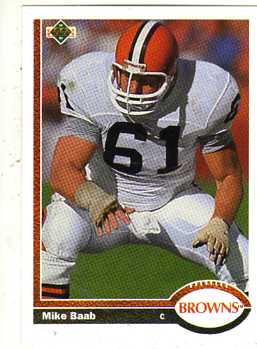 Part of the problem was that Kosar’s offensive line got old and beat up. Or simply traded away, which is what
Part of the problem was that Kosar’s offensive line got old and beat up. Or simply traded away, which is what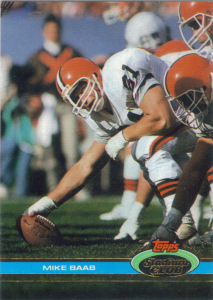 happened with C Mike Baab. He’d been drafted back in 1982 by the Browns in the 5th round (his father, who hailed from Wooster, was ecstatic that his son would don the orange helmet). He notes that at the time, the NFL trend on the defensive side was toward the 3-4 scheme. The Browns liked Baab’s 6’4”, 275 frame, and thought he could be effective going up against huge (for that time) nose guards. Baab became the Browns’ full-time center in 1983. He was the team’s starter for most of the 80s, almost never missing a game. He was one of those players who bridged the eras of Sipe and Kosar.
happened with C Mike Baab. He’d been drafted back in 1982 by the Browns in the 5th round (his father, who hailed from Wooster, was ecstatic that his son would don the orange helmet). He notes that at the time, the NFL trend on the defensive side was toward the 3-4 scheme. The Browns liked Baab’s 6’4”, 275 frame, and thought he could be effective going up against huge (for that time) nose guards. Baab became the Browns’ full-time center in 1983. He was the team’s starter for most of the 80s, almost never missing a game. He was one of those players who bridged the eras of Sipe and Kosar.
In 1986, and 1987, Kosar had had two of the best, most promising seasons of any Cleveland quarterback in history. In 1988, unfortunately, he lost his offensive coordinator (Infante) in the offseason, and his center during training camp. The Browns had drafted C Gregg Rakoczy along with Mike Junkin in the ’87 draft, and he was beginning to be forced into the lineup by Schottenheimer. Mike Baab voiced some displeasure over that, and was dispatched to New England for a fifth-round pick.
Coincidentally or not, in Kosar’s first game without Baab, he was hit by Kansas City’s Lloyd Burress on a safety blitz in the first half, precipitating the quarterback’s physical decline (his “diminishing skills”, in the infamous words of future HC Bill Belichick).
After two seasons with the Patriots, Mike Baab was reacquired by the Browns (now coached by Bud Carson), as a “Plan B” free agent. He proceeded to start every game in 1990 and 1991, before the team released him. One of the Browns’ leaders of the 1980s, one whom had displayed the ability, the endurance, and the work ethic of a champion, was moving on.
He was picked up by the Chiefs, where he played a couple games at the very end of his long career, for their head coach – his former and now present boss, Marty Schottenheimer.
(Before wrapping this up, gotta say something about a line in "Mandolin Wind." Why say "in almost 14 years"? In "13 or 14 years"? OK. "Almost 14 years"? That needs re-worked, Rod!)
***Hey, follow me on Twitter! http://twitter.com/googleeph2 #thanks
Sources included “Baab Recalls Days as a Brown”, Steve King, ClevelandBrowns.com, Oct. 2, 2011; “Cleveland Browns’ 100 Best All-Time Players: No. 96 – Mike Baab:, Mike Peticca, The Plain Dealer, Aug. 1, 2012; “Baab Was Not ‘Center’ of Attention”, Matt Florjancic, ClevelandBrowns.com, Apr. 28, 2012; football-reference.com; Wikipedia.
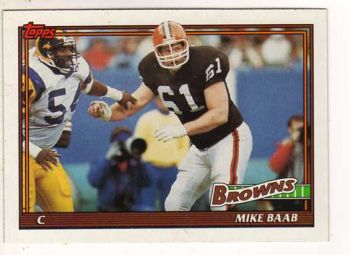
- NBA Announces 2013-2014 Schedule
- Browns Ink Sharknado
- Sharknado A No-Show For Rookie Camp
- Trent Richardson Out Until Training Camp
- Browns Sign Brandon Jackson
- Carrasco Suspended Eight Games
- Browns Add to Wide Receiver Depth with David Nelson
- Browns Need to Learn from Past Draft Mistakes
- Browns Release Chris Gocong and Usama Young
- Browns Missing on Grimes Disappointing, But Not The End
The TCF Forums
- Official- Browns Coach Search/Rumors
mattvan1 (Tuesday, January 21 2014 1:19 PM) - Movies coming out
rebelwithoutaclue (Tuesday, January 21 2014 12:56 PM) - 2015 Recruiting
jclvd_23 (Tuesday, January 21 2014 12:38 PM) - The 2014 Offseason Thread
Larvell Blanks (Tuesday, January 21 2014 12:25 PM) - Chris Grant's first 3 drafts
Kingpin74 (Tuesday, January 21 2014 10:13 AM) - Mike Brown
YahooFanChicago (Monday, January 20 2014 11:15 PM) - 2014 Hoops Hockey Hijinx
jpd1224 (Monday, January 20 2014 4:44 PM) - 2014 Recruiting
jclvd_23 (Monday, January 20 2014 2:26 PM) - Wish List - #4 Pick
Hikohadon (Monday, January 20 2014 1:26 PM) - #1 overall pick Anthony Bennett
TouchEmAllTime (Sunday, January 19 2014 1:28 PM)



